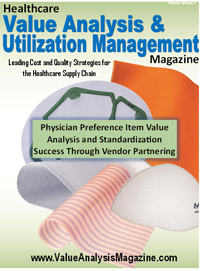“Why can’t my product get through the value analysis team?” I hear this question a lot from medical device professionals.
I understand the confusion of the Rep or Manager, or even the VP of Sales for these companies. The value analysis process is a relatively new phenomenon in healthcare sales, and most companies haven’t invested in the understanding or training to really succeed and navigate this new process.
But here’s a news flash…It’s not 2014. Sorry, but the era of the Clinical Champion getting a product only he or she wants for his/her practice has gone the way of the Blu-Ray DVD. And 2014 is never coming back.
It’s time for big and small medical device companies alike to think, act, and sell differently.
Oddly, many of the products carried by these medical device companies ARE great values and DO benefit the health system and its patients, but the companies and sales teams are unprepared to present the product in a true value analysis perspective. Here’s why:
Traditionally medical device representatives were able to stand in front of decision-makers (clinicians) and speak their language, know their clinical needs, and deliver solutions very effectively.
But times have changed. Clinical input is still highly important and valued, but clinical success is only PART of the overall picture within the health system.
These days, when it comes to new product approvals or new vendors, the value analysis team is the decision-making team for the health system. And value analysis looks at many other factors above and beyond clinical success. Quality, infection prevention, risk management, finance, and yes, COST.
Medical device companies have been slow to accept this value analysis shift. Too often, the medical device company believes the Clinical Champion will carry the product to approval without having done a pro forma, a risk assessment, or even gathering the proper data (DRGs, HCPCS, etc).
The sooner companies recognize the evolution of healthcare sales, the better.
Recognition of the value analysis committee and its needs will not only change medical devices’ “marketing message” but more importantly, alter how a company does product development, clinical research, pricing structure, and much more. There is a lot of money and investment at stake!
So, what should med device companies do differently?
Here are three things I urge medical device companies to do right now to improve selling into health systems and value analysis committees.
- Meet with value analysis team members and learn what MATTERS to health systems. HOW do these systems like to digest new information? What is needed for each new product as part of the due diligence?
- Learn how the value analysis process works. What does the committee need to see and understand before committing time, effort, and money to explore your new product request?
- Finally, ask yourself, “HOW can I show my product’s value to the value analysis team in a way that matters TO THE TEAM?”
If companies do the above three things, they will not only understand how the new healthcare economic landscape stands, but they will also immediately gain MASSIVE competitive advantages over others in their sector.
I expect these forward-looking medical device companies will see a 10-15% increase in topline revenue over 2-3 years and a competitive advantage over competitors of 5-10 years.
So, let’s stop thinking about how to get a new product THROUGH the value analysis committee and start thinking about how to show the product’s value to the entire health system.
Article By:
Mark Copeland, Vice President, Sales, 3T Medical Systems, Inc.
Mark Copeland is a 28-year healthcare sales professional with the last 20 spent in startup medical device companies.
His company, 3T Medical Systems Inc, manufactures and sells innovative medical devices to health systems globally, and Mark teaches companies how to present their new product requests in a way that meets the value analysis requirements.
Contact Mark at mcope67@gmail.com for more information, or visit ValueAnalysisExpert.com.
Articles you may like:
The Value Curve: Cost vs. Value and Risk Assessment in Supply Chain Management





